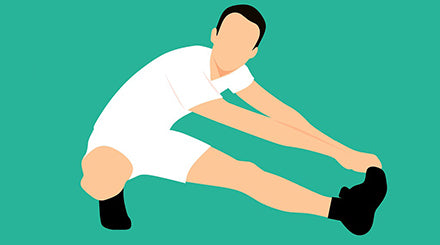
How to Prevent Foot Cramps in Your Arches
- Massage (e.g. ball of the foot) effectively relaxes affected muscles, increases circulation and oxygen levels as well as removes harmful lactic acid.
- Application of cold followed by heat can relax muscles, reduce pain and improve blood circulation. Check out our helpful products for ball of foot pain relief Ball of Foot Pain Relief.
- Stretching is one of the best, short term treatments to relieve foot cramps. Regular stretching of the feet also helps prevent cramping.
- Eat a healthy, balanced diet to ensure a proper balance of vitamins and minerals which allows normal functioning of nerves and muscles.
- Increase water intake to prevent dehydration during hot weather and when exercising.
- Wear appropriate footwear that fits well and supports the feet.
- Exercise appropriately, as over-exercising or doing so too vigorously is not recommended. Warm up and cool down periods are important. When sitting for long periods, keep the feet moving. Circle the ankles to improve circulation and reduce the chances of getting cramps in the feet.
- Stretches to improve muscle strength in the feet/toes reduce the chances of getting cramps.
- Vitamin and/or mineral supplements help address any deficiencies. Consult a doctor before starting supplements since they can have harmful side effects.
Foot cramps are caused by involuntary muscle spasms, commonly occurring in the arches of the feet and/or toes.
People of all ages can suffer from foot cramps. However, they are much more common in the elderly, especially in those over the age of 80. One in three people in this age range regularly experience foot cramps in the arches.
Typically accompanied by sharp, intense pain, foot cramps feel like the muscles of the arches are "knotted". These pains can last for a few seconds or continue off and on for a couple of days.
Causes of Foot Cramps
The exact cause(s) of foot cramps is often unknown, but they can be due to a combination of several factors such as:
- Lack of certain vitamins and minerals including calcium, Vitamin D and potassium can cause foot cramps.
- Nerve damage (e.g. pinched nerves) can lead to foot cramps.
- Dehydration causes decreased calcium and potassium levels, leading to cramping of the arch muscles.
- Health issues (e.g. thyroid problems, anaemia, diabetes, Huntington's and/or Parkinson's diseases, etc.) may cause foot cramping.
- Certain medications (e.g. diuretics) may cause imbalances of serum potassium and calcium, possibly leading to arch cramps.
- Reduced circulation from spending long periods of time in the same position can cause cramps to develop in the feet.
- Muscle tightness, specifically of the muscles running under the soles of the feet, can result in arch and/or toe cramps.
- Muscle fatigue can lead to foot/toe cramps in athletes or dancers as they routinely put extra stress on their feet.
- Trauma causes foot spasms in order to protect the muscles from further damage.
- Pregnancy can cause foot cramping as a result of pressure from the enlarged uterus on the veins of the legs.
- High heeled and/or narrow, pointed shoes typically squash the feet/toes, increasing the likelihood of arch/toe cramps developing. For stylish alternatives with a wide box toe, check out shoes from Dansko.
Check out our section of foot health products to find items to fit your needs.
